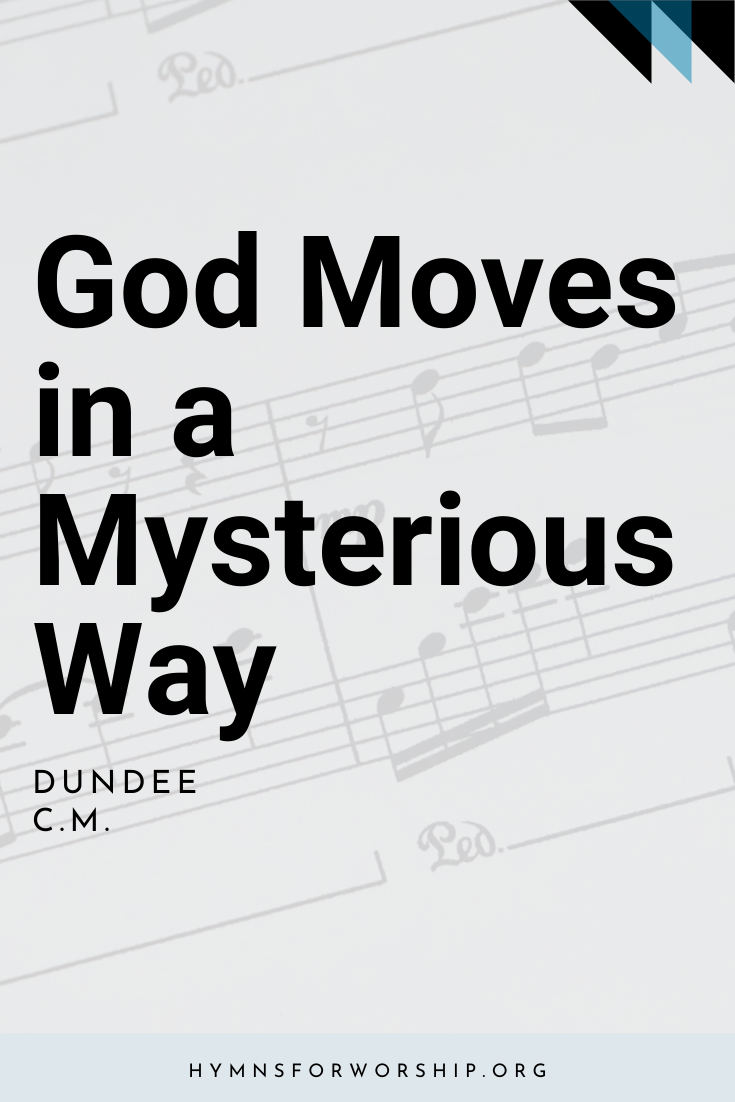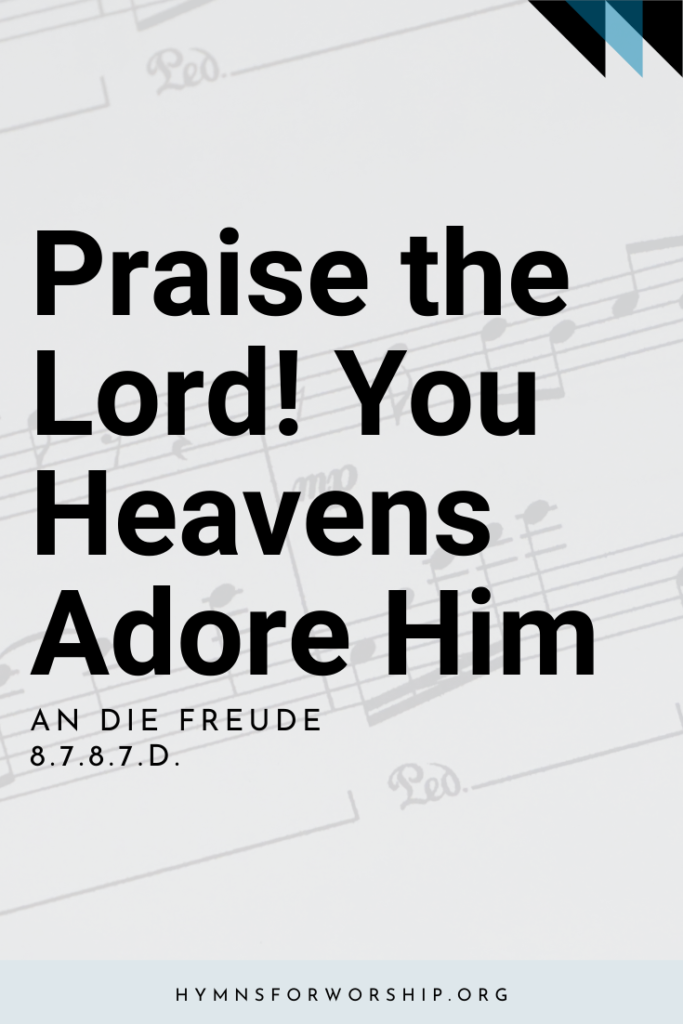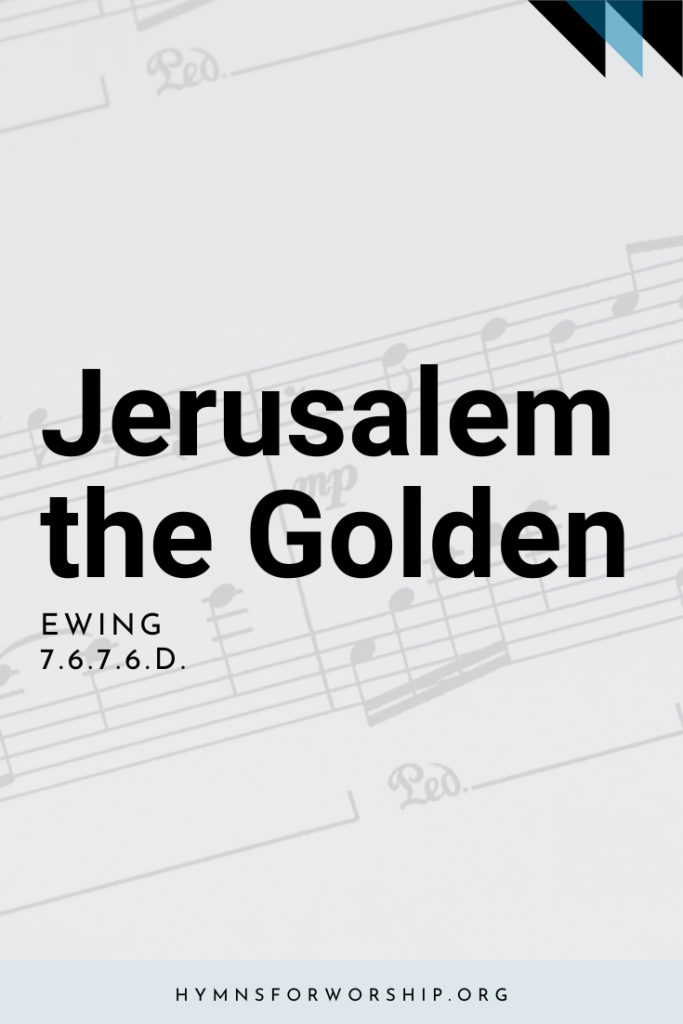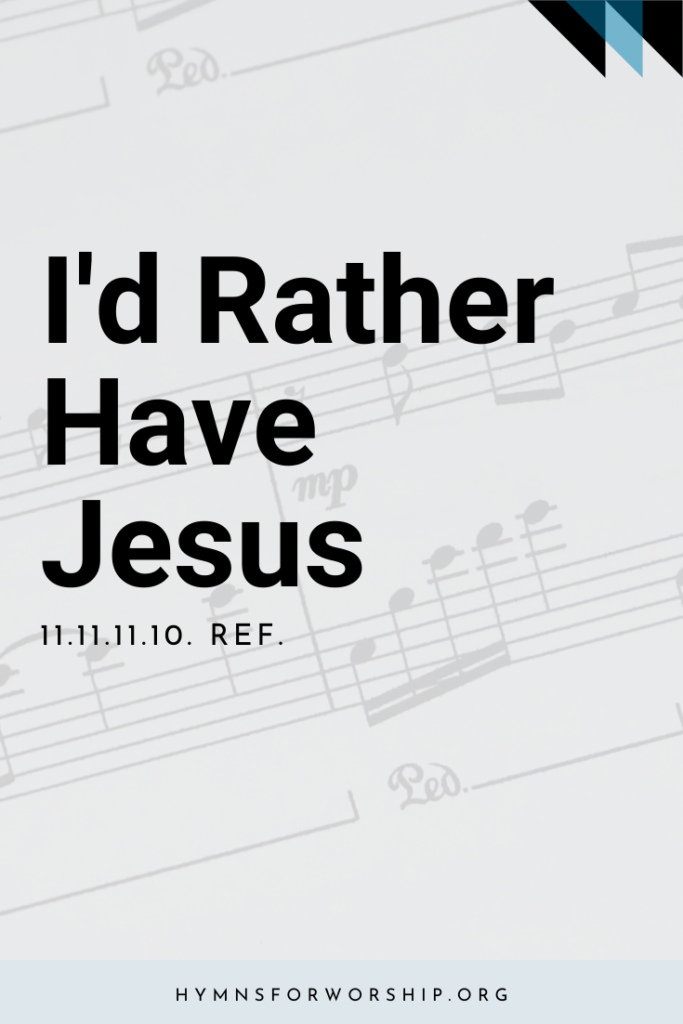GOD THE FATHER >> GRACE & MERCY OF GOD
SDAH 107
God moves in a mysterious way
His wonders to perform;
He plants His footsteps in the sea,
And rides upon the storm.
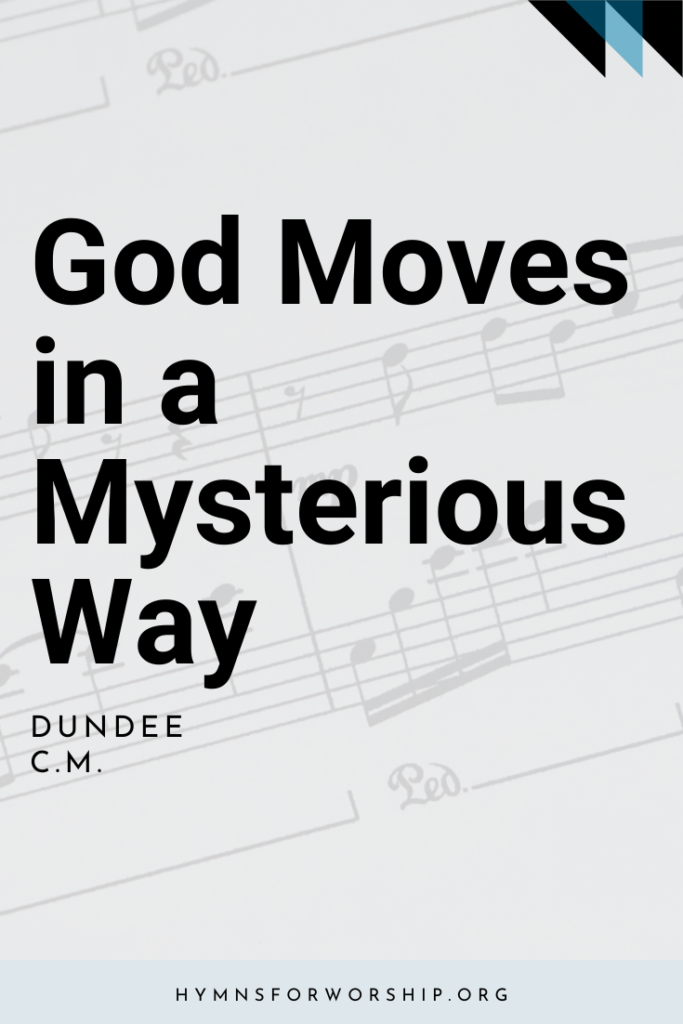
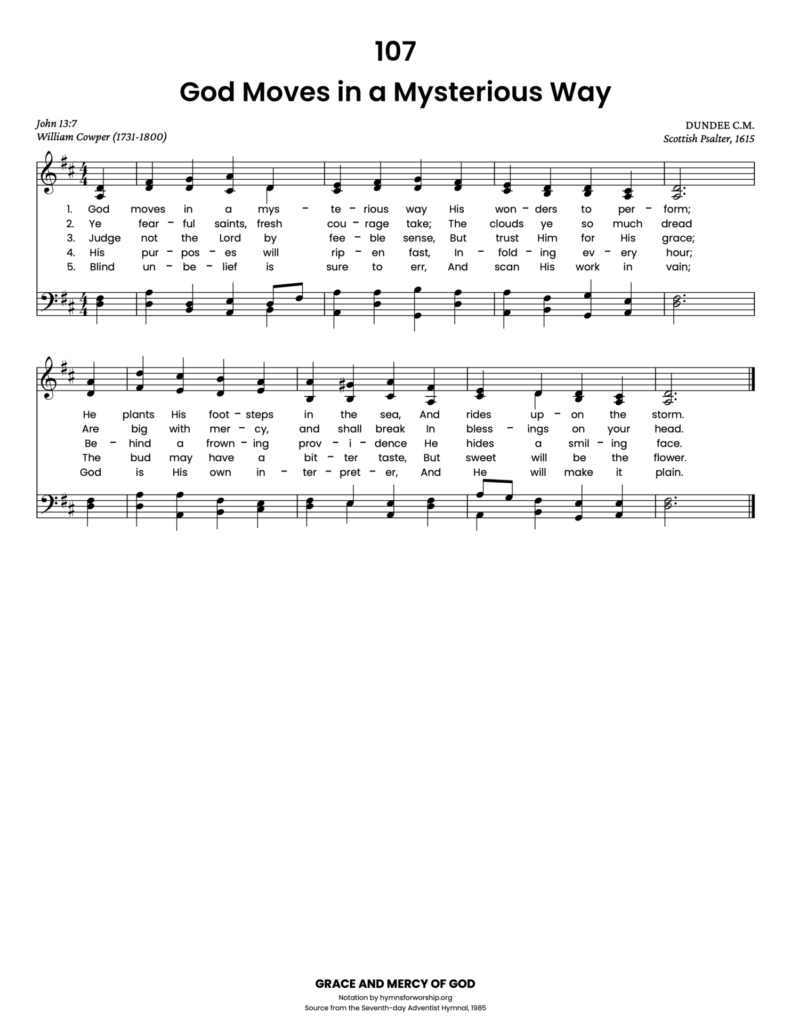
Get the hymn sheet in other keys here
For Worship Leaders
Make each hymn more meaningful with these helpful tools: Short, ready-to-use hymn introductions for church bulletins, multiple ways to introduce a hymn based on your worship theme and in-depth history and insights to enrich your song service.
Hymn Spotlight: God Moves in a Mysterious Way
First published in 1774 and later included in the Olney Hymns, this profound text by William Cowper reflects his deep struggles and even deeper faith. Titled “Light Shining Out of Darkness,” the hymn is a poetic meditation on divine providence, inspired by John 13:7: “Thou shalt know hereafter.” Though Cowper suffered from periods of mental anguish, his hymns—like this one—point to a God whose wisdom and love are constant, even in darkness.
The tune DUNDEE, a Scottish melody first printed in 1615 and harmonized in the 1625 Scottish Psalter, complements the text’s sober and steady tone. Its simple, stepwise motion supports reflective, heartfelt congregational singing. As we sing, may we be reminded that behind every frowning providence, God hides a smiling face.


Text
1
God moves in a mysterious way
His wonders to perform;
He plants His footsteps in the sea,
And rides upon the storm.
2
Ye fearful saints, fresh courage take;
The clouds ye so much dread
Are big with mercy, and shall break
In blessings on your head.
3
Judge not the Lord by feeble sense,
But trust Him for His grace;
Behind a frowning providence
He hides a smiling face.
4
His purposes will ripen fast,
Unfolding every hour;
The bud may have a bitter taste,
But sweet will be the flower.
5
Blind unbelief is sure to err,
And scan His work in vain;
God is His own interpreter,
And He will make it plain.

Hymn Info
Biblical Reference
John 13:7 (a) Ps 77:1; Nah 1:3 (b) Eze 34:26 (e) Prov 15:19
Author
William Cowper (1731-1800)
Hymn Tune
DUNDEE
Metrical Number
C.M.
Tune Source
Scottish Psalter, 1615
Theme
GRACE & MERCY OF GOD

